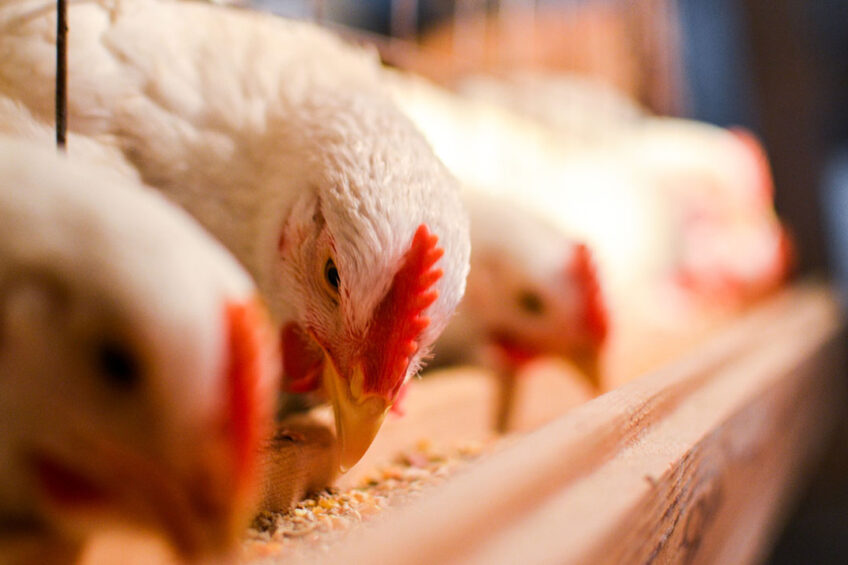EU lifts ban on using animal by-products for poultry feed

The EU has lifted its ban on the use of animal by-products for animal feed. The proposed change in legislation allows processed animal protein from pigs to be used in poultry feed and from poultry to be used in pig feed. On 2 July, the EU Council voted unanimously to adopt the regulation.
In the wake of the BSE (bovine spongiform encephalopathy) crisis in 1994, a ban on the use of processed animal protein in ruminant feed was put in place. Experts believe BSE is caused by giving cattle feed made with meat and bone meal from infected animals. In an effort to avoid possible cross-contamination, the ban on the use of processed animal protein was extended to all farm animals in 2001.
The reasoning behind the decision to lift the ban is two-fold. First, the European Green Deal and the Farm to Fork Strategy encourages the use of by-products from within the food industry and also promotes the use of sustainable and local ingredients. “PAP [processed animal protein] fits very well with these requirements,” says Carine van Vuure, manager Nutrition and Regulatory Affairs at Darling Ingredients, which is also a member of the European Fat Processors and Renderers Association (EFPRA). Additionally, the risk of cross-contamination appears to be slim.The last case of BSE in cattle in the EU was in 2016 and the last case in the UK was in 2018. Of the 27 EU member states, 24 have been classified as having negligible risk.
Animal by-products in animal feed proven safe
The ban on the use of processed animal protein in feed for cows, sheep and other ruminants, and on intra-species recycling, remains in force. The rules will only change to allow additional types of processed animal protein to be used in poultry and pig feed when they have been proven to be safe. The benefits of lifting the ban are many, says Van Vuure. For poultry slaughterhouses there are more avenues for the use of their slaughter by-products, especially products that are not used in pet food products. Such products include poultry blood meal, feather meal and lower protein meals.

In the area of production, farmers with laying hens and broilers will be able to reduce their reliance on soybean meal in feeds by using locally-produced pork meal, says Van Vuure. While it might seem unnatural, pigs and poultry are omnivores that benefit from a balanced diet that includes a rich source of protein.
An improvement in feed quality
Aside from reducing waste and reliance on imported protein, the use of processed animal products in feed could improve feed quality as well, given that the digestibility of this type of protein and phosphorus is high. “Depending on the set requirements in the processing chain, feed for poultry and pigs could become cheaper, too,” she adds. The carbon footprint of the diet will also be improved. “A lot of farmers remember the time before the ban as a time with better balanced diets due to the use of animals proteins,” says Van Vuure. “So, less feather pecking and improved health in general.”
Welcomed by industry
The change was welcomed by farm interest groups such as Copa-Cogeca and the Association of Poultry Processors and Poultry Trade (AVEC). In its authorisation of these products, the EU’s proposal acknowledges the absence of a food safety risk and offers a legislative framework that provides a high level of security for all actors in the supply chain, says Paul-Henri Lava, AVEC senior policy advisor.
AVEC welcomes the opportunity to diversify its feed supply by using processed animal proteins from pigs, says Lava who expects poultry processed animal protein to provide a similar source of protein for the pig sector. “PAPs are used by most of our competitors without any restrictions, while avian and porcine PAPs for use in fish feed has already been authorised in the EU for more than 8 years without any issue.”
Housefly larvae contribute to sustainable layer nutrition
A literature study by Schothorst Feed Research shows that housefly larvae are a viable protein source in sustainable layer nutrition which can fully replace soya. Read more…
The interest group welcomes the possibility of using insects in feed, as well. Lava considers them to be a promising source of protein for poultry production in the EU. Demand for protein-rich feed is currently high in the EU. Driven by globalisation and climate change, Lava believes the trend will continue to rise in the future. “Offering solutions to source protein feed from EU-based producers is a step in the right direction,” Lava says. “The EU authorities should go further in that direction.”

Processed animal proteins are made from Category 3 animal by-products that come from healthy animals that are fit for human consumption at the point of slaughter. To ensure safety, the sourcing, processing and transport of processed animal proteins will take place under veterinary control. In the 20 years since the ban was first implemented, researchers have developed a PCR test that ensures processed animal proteins do not contain by-products they should not contain. “Because we have a species-to-species ban in Europe, so they also test pigs and poultry,” says Van Vuure.
More research needed
A lot has changed since processed animal proteins were first banned 20 years ago. Processing techniques, for instance, have evolved and improved. Some research has been conducted on the nutritional benefits of porcine processed animal protein used in poultry feed. Van Vuure outlined some of the results in a recently-published white paper. Working closely with EFPRA, Wageningen Livestock Research conducted a study in 2010 to evaluate the nutritional content and digestibility of processed animal proteins, as well as the overall performance of laying hens that consumed the feed. The 2010 study evaluated 4 types of processed animal proteins in feed: 40%, 50%, 58% and 60% protein in the diet.
”…hens showed a delay in the development of feather damage.”
Layer performance differed between treatments. The most favourable of the 4 was 50%, and the least favourable was 40%. Differences in performance seemed to be partially related to differences in feed intake and corresponding amino acid intake. While supplementation with processed animal proteins did not generally reduce feather-pecking behaviour, in the 40% and 50% diets hens showed a delay in the development of feather damage. At the same time, in comparison with the flocks receiving the higher processed animal protein diet, those under the 40% and 50% regimes showed improved litter condition, foraging, walking behaviour and floor pecks.
Suitable replacement for soybean meal in broiler diets
A 2018 study assessed digestibility and overall performance when 2 types of porcine processed animal proteins were incorporated into the diet of broilers, replacing soybean meal. The researchers looked at intestinal health, litter quality, footpad lesions and bone quality. The results of the study showed that both types of processed animal proteins tested can be used as suitable replacements for soybean meal in broiler diets without impacting performance results, including litter quality, footpad lesions, gait, bone quality and intestinal health.
The performance study was followed by a study of digestibility. More complete results can be found on the EFPRA website. Realistically, however, 2 studies are not enough to draw definitive conclusions. “As a nutritionist and a scientist, I think we should do more research,” says Van Vuure. “To really make a claim, we have to do more.”












